Phosphorus excess - nutrients that can help
Summary points with links to more in depth info by Bryce Hanna/CK Eternity.
Foods and nutrients can help protect the kidneys, bone and tooth mineralization by helping control the balance of calcium and phosphorus within blood serum. This can occur in a few ways - so groups of helpers:
Foods or nutrients that can help bind free phosphates within cells as ATP like energy storage chemicals include glucose - sugar, which we tend to get too much of, creatine - a protein powder used as a muscle building supplement, thiamine - vitamin B1, and CO2/bicarbonate.
*Bicarbonate also can help with acidity/alkalinity but sodium bicarbonate would be adding a lot of sodium. Potassium bicarbonate is also available as a bulk powder. Being overly acidic promotes demineralization of bone or tooth which would add to an excess of free phosphorus and calcium.
The non-flush niacinamide and chitosan help bind free serum phosphate. Chitosan is formed from chitin from mushrooms or shells.
Magnesium and calcium carbonate bind dietary phosphate within the bowel so it won't be absorbed.
Vitamins B2, B5, and B6 all use phosphorus within their active coenzyme form. #1-4: (x.com/photobiogenesis)
Sunshine, vitamin D adequacy, and critically: Vitamin K2 helps protect against calcification of soft tissue by helping the calcium and phosphorus stay or get into bone and tooth matrix. Dietary calcium is helpful, while calcium supplements don’t seem to be protective. Excess phosphorus is common in a meat and dairy rich diet and beans, nuts, seeds and grains are also high in phosphorus compared to calcium and magnesium.
I have two posts that go into individual food detail on which beans, nuts, seeds, or grains might have less phosphorus in ratio to calcium, magnesium, and/or protein. (post 1, draft version), (post 2, spreadsheet version)
From post 2: The updated spreadsheet includes ratios for magnesium to calcium and phosphorus to calcium and phosphorus to protein. Better choices for more frequent use have black-eyed peas as a standout for low phosphorus to calcium ratio and a good amount of magnesium and protein. Other good choices include lima beans, pinto, white, and navy beans, chickpeas and extra firm tofu. Any of the beans are a far better source of protein (gr) in ratio to phosphorus (mg) than nuts, seeds or flours - except chickpea flour -which is a legume. *Pinto, white, and navy beans would have more anti-nutrient lectins than black-eyed peas, lima or garbanzo beans. (from a third post)
*I am working on something else, so this is a quick post to share the in depth Threads, and the highlighted nutrients which I listed above.
Thread by Bryce Hanna, @ photobiogenesis on X, also writes as CK Eternity. https://x.com/photobiogenesis/status/1819182047337824633?t=Qvh-ZNVtmMEMZB2AVJpBqg&s=19
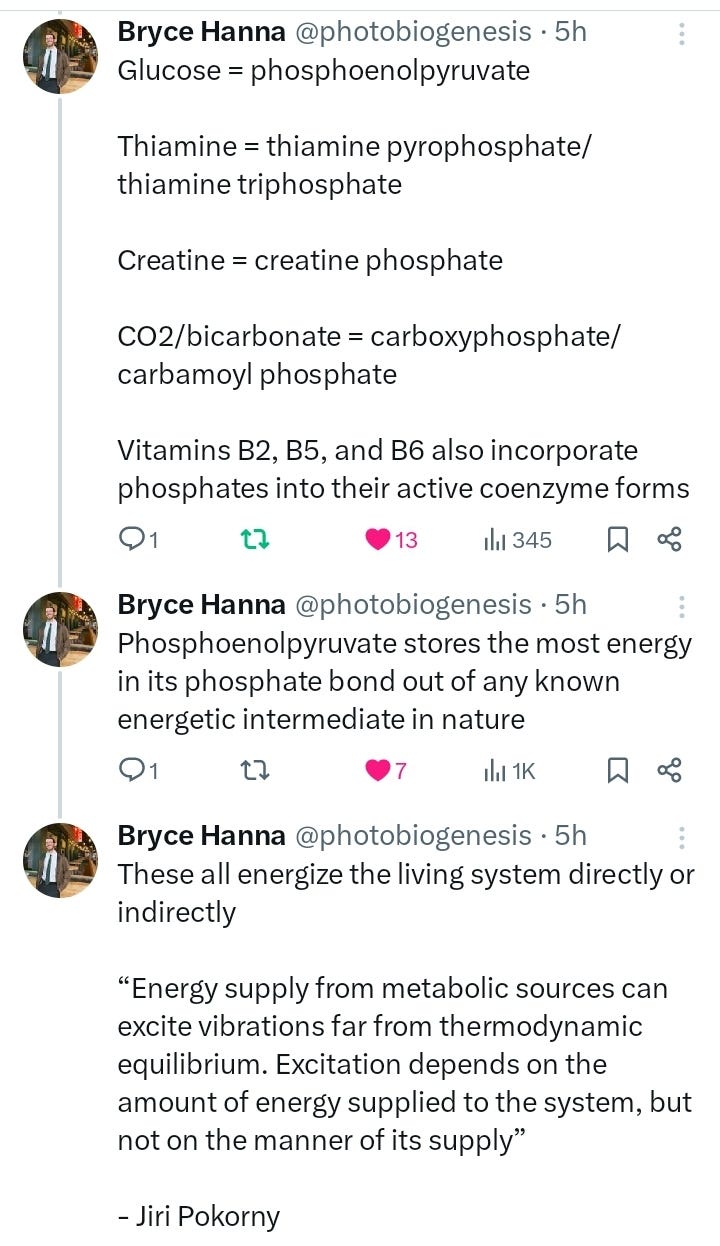
“Energy supply from metabolic sources can excite vibrations far from thermodynamic equilibrium. Excitation depends on the amount of energy supplied to the system, but not on the manner of its supply.” - Jiri Pokorny, via a Thread (x.com/photobiogenesis)
And vitamin K2 is critical for preventing calcification - dietary calcium can help while limiting phosphorus but calcium supplements tend to make it worse.
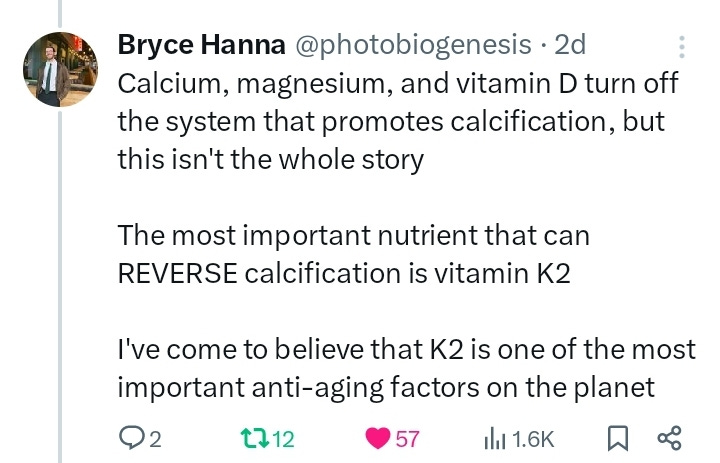
Thread about calcification and the role phosphorus plays in soft tissue ‘calcification’. https://x.com/photobiogenesis/status/1818678398085914658?t=giBClOrWBfOMT081qiS2rA&s=19
Bryce Hanna was just interviewed by David Gornoski and that can be viewed here, ~ 2 hours: https://x.com/DavidGornoski/status/1819368746181329111?t=kVyU7SJCDVuvnUDE4vYLEQ&s=19
And from another Thread about magnesium-ATP and Gilbert Ling. Image below, https://x.com/photobiogenesis/status/1815907752062976423?t=nu4i8CgeDZ-LievMEgb2VQ&s=19
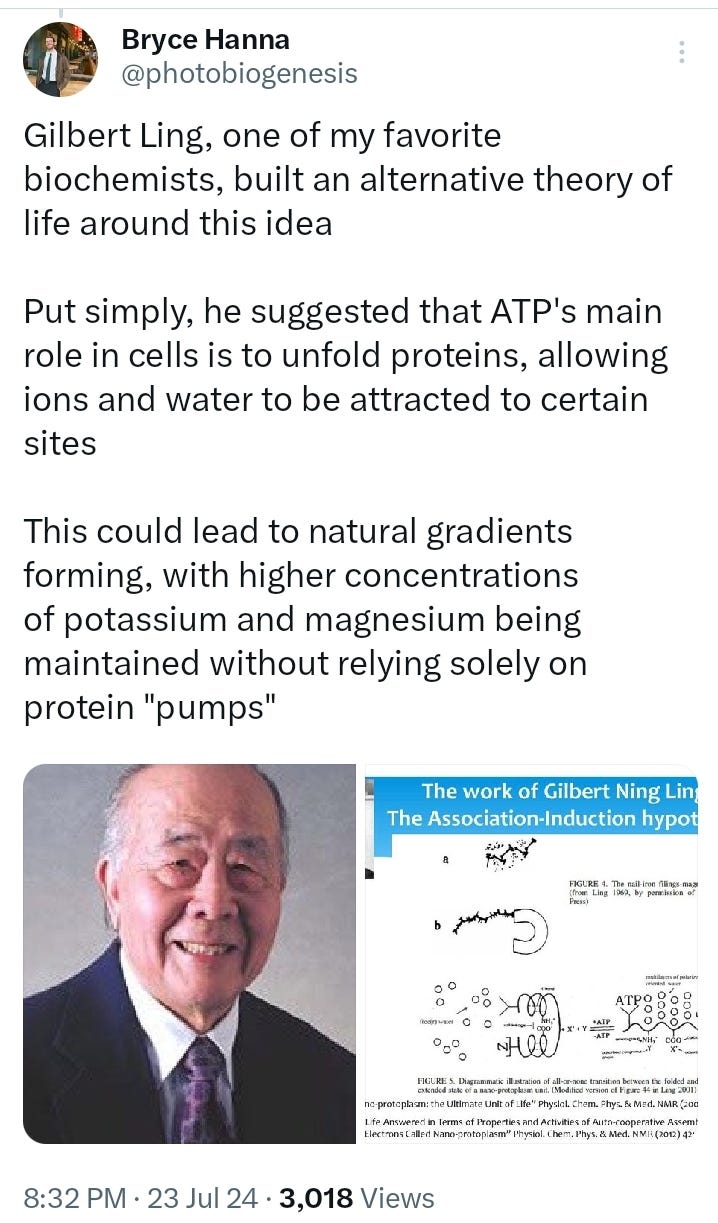
Long Thread on thiamine as a tri-phosphorus carrier: https://x.com/photobiogenesis/status/1815907715576914227?t=OlgCThGrxH-njgEe3TGKFw&s=19
The gist — vitamin B1 is more important than previously realized because it also has a triphosphate form, like ATP is adenosine triphosphate.
Paper linked in the above image: Podolsky, Richard & Morales, Manuel. (1956). The enthalpy change of adenosine triphosphate hydrolysis. Journal of Biological Chemistry. 218. 10.1016/S0021-9258(18)65857-0. https://www.researchgate.net/publication/277227185_The_enthalpy_change_of_adenosine_triphosphate_hydrolysis via https://x.com/photobiogenesis/status/1815907754948640803?t=h_affqxGQ8En3-y0Ye1t5A&s=19
Bryce Hanna also writes on Patreon; links here: https://x.com/photobiogenesis/status/1815911502659899478?t=MC6GdiYp5SO-O8dRqHlJPg&s=19
And he writes on a website called multiflora-herbs.com, and the most recent blog post (credited to CK Eternity) goes into detail about thiamine.
Thiamine, CO2, and restoring energy balance, by CK Eternity, January 25, 2024 (multiflora-herbs.com)
A third Thread on Deuterium- heavy water isotopes - the gist some is good - needed even, but too much is bad. https://x.com/photobiogenesis/status/1819073449207169400?t=gNOThMQAxsxyX30q2YHySQ&s=19
Image is from the deuterium Thread: https://x.com/photobiogenesis/status/1819073449207169400?t=9XheDzRcl0Ugq0NU28gPUQ&s=19
Disclaimer This information is being shared for educational purposes within the guidelines of Fair Use and is not intended to provide individual health guidance.
References by one of the mentioned authors
Pokorný J, Pokorný J, Kobilková J, Jandová A, Vrba J, Vrba J. Targeting mitochondria for cancer treatment - two types of mitochondrial dysfunction. Prague Med Rep. 2014;115(3-4):104-19. doi: 10.14712/23362936.2014.41. PMID: 25626329. https://pubmed.ncbi.nlm.nih.gov/25626329/
Pokorný J, Pokorný J, Borodavka F. Warburg effect-damping of electromagnetic oscillations. Electromagn Biol Med. 2017;36(3):270-278. doi: 10.1080/15368378.2017.1326933. Epub 2017 Jun 2. PMID: 28574758. https://pubmed.ncbi.nlm.nih.gov/28574758/
Pokorný J, Hašek J, Jelínek F. Electromagnetic field of microtubules: effects on transfer of mass particles and electrons. J Biol Phys. 2005 Dec;31(3-4):501-14. doi: 10.1007/s10867-005-1286-1. PMID: 23345914; PMCID: PMC3456341. https://pubmed.ncbi.nlm.nih.gov/23345914/
Pokorný, Jiří, Foletti, Alberto, Kobilková, Jitka, Jandová, Anna, Vrba, Jan, Vrba, Jan, Nedbalová, Martina, Čoček, Aleš, Danani, Andrea, Tuszyński, Jack A., Biophysical Insights into Cancer Transformation and Treatment, The Scientific World Journal, 2013, 195028, 11 pages, 2013. https://doi.org/10.1155/2013/195028 https://onlinelibrary.wiley.com/doi/10.1155/2013/195028
Abstract excerpt: Biological systems are hierarchically self-organized complex structures characterized by nonlinear interactions. Biochemical energy is transformed into work of physical forces required for various biological functions. We postulate that energy transduction depends on endogenous electrodynamic fields generated by microtubules. Microtubules and mitochondria colocalize in cells with microtubules providing tracks for mitochondrial movement. Besides energy transformation, mitochondria form a spatially distributed proton charge layer and a resultant strong static electric field, which causes water ordering in the surrounding cytosol. These effects create conditions for generation of coherent electrodynamic field. The metabolic energy transduction pathways are strongly affected in cancers. Mitochondrial dysfunction in cancer cells (Warburg effect) or in fibroblasts associated with cancer cells (reverse Warburg effect) results in decreased or increased power of the generated electromagnetic field, respectively, and shifted and rebuilt frequency spectra. Disturbed electrodynamic interaction forces between cancer and healthy cells may favor local invasion and metastasis. A therapeutic strategy of targeting dysfunctional mitochondria for restoration of their physiological functions makes it possible to switch on the natural apoptotic pathway blocked in cancer transformed cells.” (Pokorný, et al., 2013)
This 5G article might be a different person, there is no ‘ in the name:
Pokorny J, Seda P, Seda M, Hosek J. Modeling Optimal Location Distribution for Deployment of Flying Base Stations as On-Demand Connectivity Enablers in Real-World Scenarios. Sensors (Basel). 2021 Aug 19;21(16):5580. doi: 10.3390/s21165580. PMID: 34451025; PMCID: PMC8402288. https://pubmed.ncbi.nlm.nih.gov/34451025/


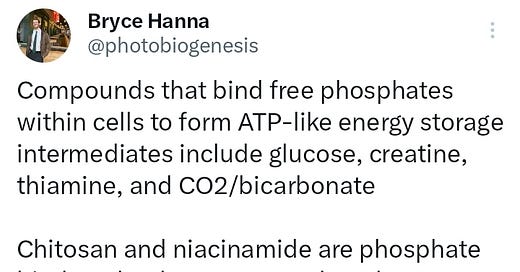



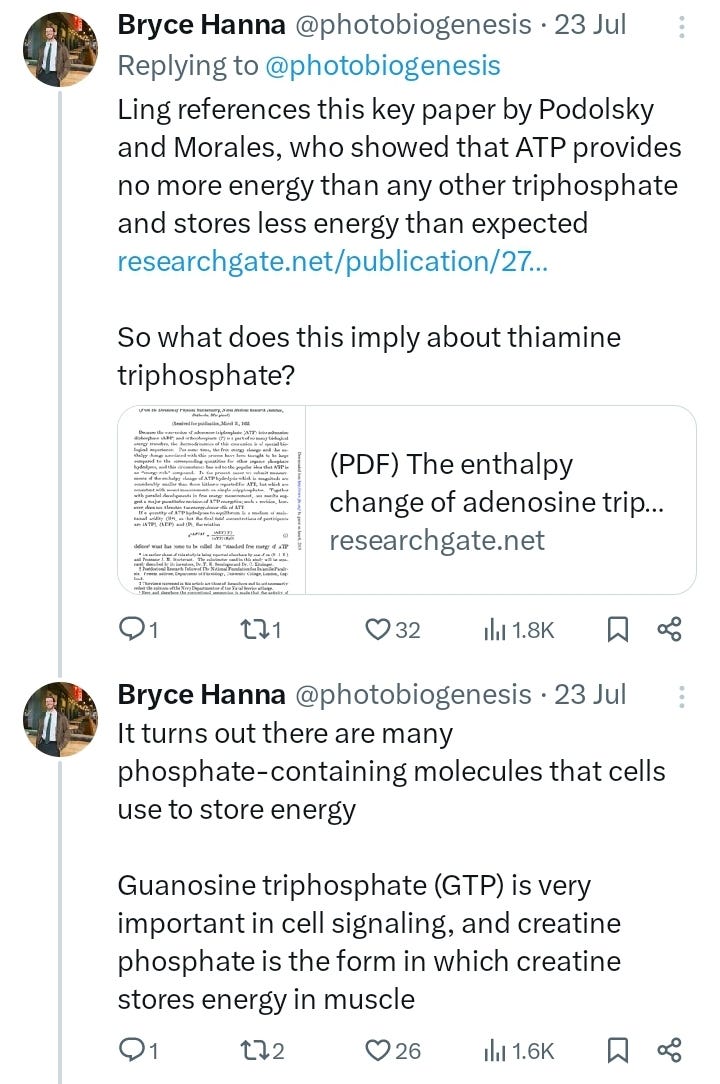
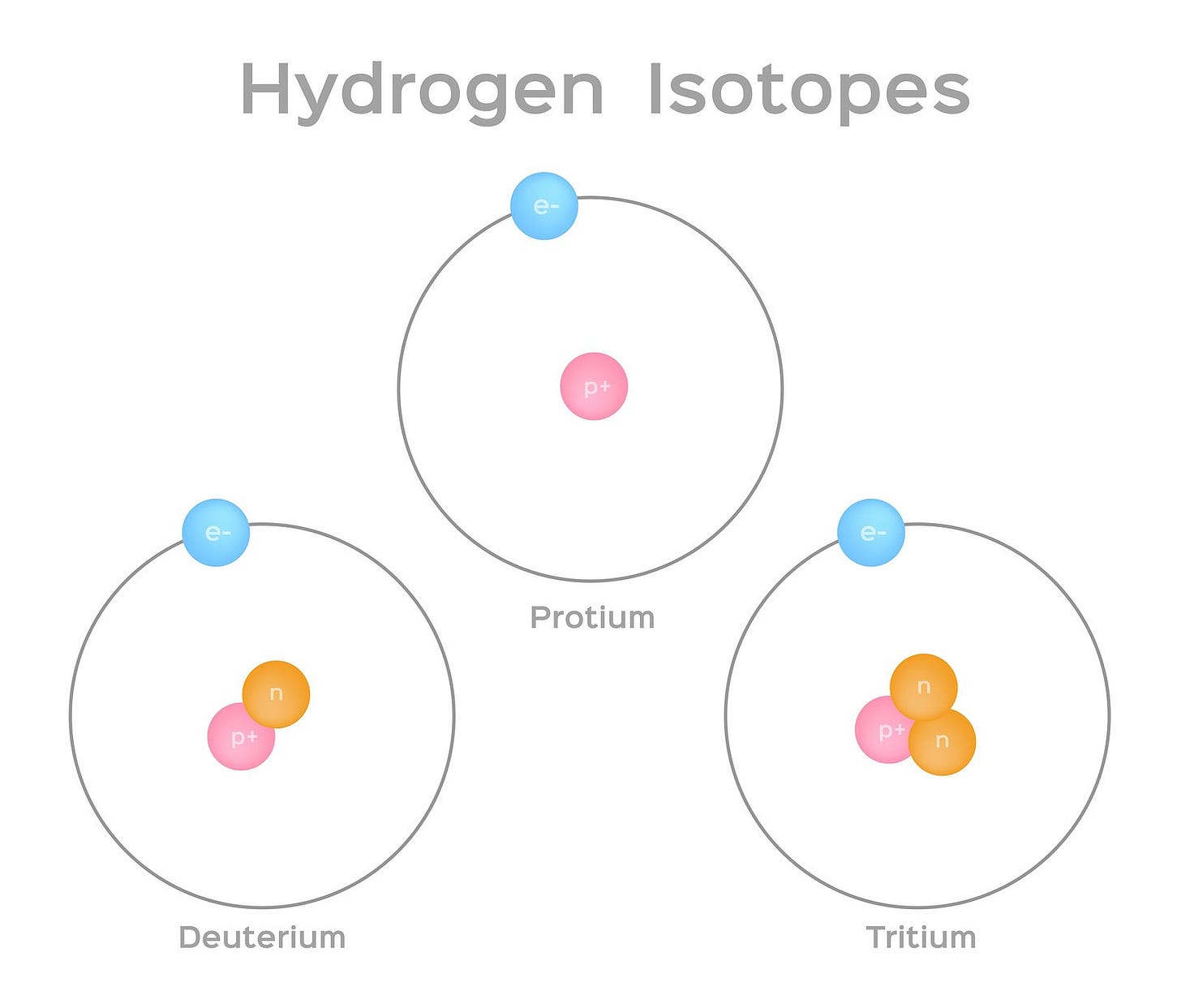
Extremely well articulated and very informative… re-reading your article. Many thanks for sharing the wealth of knowledge.